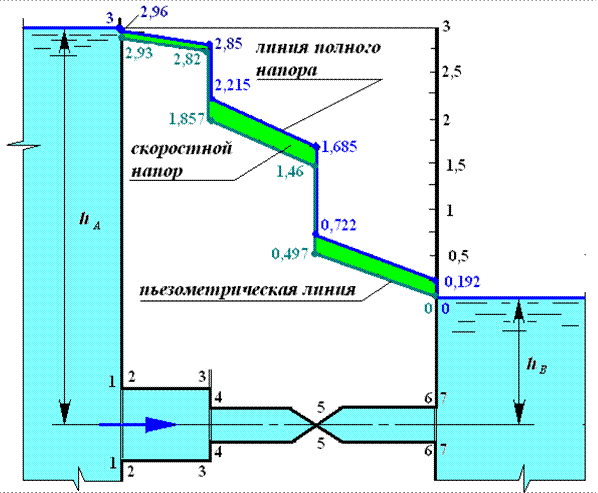Gidravlika Aljtshulj
четверг 10 января admin 67
New Tretyakov Gallery on Krymsky Val In 1985, the Tretyakov Gallery was administratively merged with a gallery of contemporary art, housed in a large modern building along the, immediately south of the. The grounds of this branch of the museum contain a collection of sculpture, including such highlights as 's iconic statue (which was removed from in 1991), the Swords Into Plowshares sculpture representing a nude worker forging a plough out of a sword, and the Young Russia monument. Nearby is 's of, one of the tallest outdoor statues in the world. Near the gallery of modern art there is a sculpture garden called ' that displays statues of former that were relocated.
Culture of Taiwan. The culture of Taiwan is a blend of Confucianist Han Chinese and Taiwanese aborigine cultures, which are often perceived in both traditional and modern understandings. More recently, Japanese and American cultures have influenced Taiwanese culture as well.
There are plans to demolish the gallery constructed in the late Soviet modernism style, though public opinion is strongly against this. References [ ].
This means that these manufacturers are the OEM for the Boiler Manufacturers, so as long as the original part is purchased (Honeywell, Sit, White Rogers) from the OEM it can be sold as an original OEM product. If the pilot light goes out for any reason the thermocouple cools down and the pilot solenoid drops out due to the electrical current diminishing which in turn switches of the gas to the main burner.  This is an OEM Part The term OEM stands for 'Original Equipment Manufacturer ' this part is an original part and was bought from the Original manufacturer of the part. Below is an example: Gas Valves on most British Gas Boilers are made by Honeywell, Sit, White Rogers etc. What does that really mean r a boiler manufacturer such as Wocester Bosch, Baxi, Glowworm etc.
This is an OEM Part The term OEM stands for 'Original Equipment Manufacturer ' this part is an original part and was bought from the Original manufacturer of the part. Below is an example: Gas Valves on most British Gas Boilers are made by Honeywell, Sit, White Rogers etc. What does that really mean r a boiler manufacturer such as Wocester Bosch, Baxi, Glowworm etc.

Main article: Taiwan's culture and cultural legacy has been largely shaped by the processes of and as the structural and psychological effects of successive colonial projects have been integral to developing Taiwan's self-image and the evolution of both official and unofficial Taiwanese culture. For most of its colonized existence, Taiwan remained on the cultural margins, far from the centers of civil and cultural life of each regime, and with every regime change, Taiwan's cultural center shifted.
At various times Taiwan's cultural center has been, Amsterdam, (Amoy), -era Beijing,, postwar China and even, arguably, the United States. Dancer in traditional aboriginal dress Before the ceded Taiwan to Japan in 1895, Taiwan's culture was characterized by Qing frontier societies of farmers and highland. Due to Taiwan's strategic location along East Asian trade routes, Taiwanese were also exposed to cosmopolitan influences and the effects of European commerce. By the middle of the Japanese era (1895–1945), Taiwan had begun to shift from local to contemporary global culture, under the guidance of Japanese style “westernization”. Beginning during Japan's build up for war, Japan invigorated its policies to Japanize Taiwan for mobilization against the Allies.
Japan's effort taught Taiwan's elite, Japanese culture and language, but did not largely interfere in religious organization. When Japan's suppressive wartime policies were lifted following, Taiwanese were eager to continue with their prewar activities. Japan's colonial legacy has shaped many of the customs and mannerisms of Taiwanese. Japan's colonial legacy is still visible, due to Japan's massive effort in constructing Taiwan's economic infrastructure and industrial base, which is often cited as a major factor in Taiwan's rapid. KMT era cultural policy [ ].
Main article: During the early postwar period the (KMT) suppressed Taiwanese cultural expression and barred Taiwanese from cosmopolitan life except in the spheres of science and technology. The authoritarian KMT dominated public cultural space and Chinese nationalist networks became a part of cultural institutions, leaving little resource for cultural autonomy to grow. Under the early KMT, Taiwan was realigned from a Japanese imperial center to a Chinese nationalist center, under the influence of KMT and American interests. Although American cultural activities were modest, they played a significant role in Taiwan's developing cultural scene. The KMT claimed a loss of morale led to “losing China” and thus the state issued a series of ideological reforms aimed to “retake' China, which became the major state cultural program of the time. The immediate preoccupation with losing China diverted long term investment in the humanities and social sciences. On another level, the state's main objective was to “” the Taiwanese by teaching them and Nationalist ideology through compulsory primary education.
By the late 1940s the KMT had for its cultural policies. When Taiwanese had resumed the cultural activities, which were outlawed by the Japanese in 1937, the Nationalist attitude was that Taiwanese had been Japanese “slaves” and would therefore have to complete a period of moral and ideological tutelage before they could enjoy their full rights as citizens of the. The destroyed Taiwan's urban elite and the arrival of the mainlander elite ensured Nationalist domination of urban cultural centers. In 1953, Generalissimo issued his first major opinion on culture to complete ’s, which included prescribing Nationalist curriculum for education, building facilities for intellectual and physical recreation and the major state cultural program of promoting anti-communist propaganda. In regard to Taiwanese cultural life, the major thrust was for “universalization” of education in Mandarin, which was enforced by law. Despite the hard-line Chinese control over culture, the Soviet advances in technology led to a new Nationalist focus on building closer cooperation with American universities and developing engineering programs. The American presence in Taiwan also encouraged Taiwanese to resume some politically, ethnically neutral cultural activities, which was expressed in a flourishing Taiwanese-language media market.
